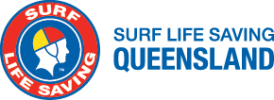This information has been supplied courtesy of the Queensland Government – Department of Emergency Services and the Queensland Ambulance Service.
ENGAGING IN PHYSICAL ACTIVITY
Exercising in the heat creates competitive demands on the cardiovascular system, which is required to increase the blood supply to exercising muscles. In extreme heat and high humidity, evaporation is slowed and the body must work harder to maintain a normal temperature. Most heat-based illnesses occur because a person has been over- exposed to heat and/or over-exercised.
HOT WEATHER – Heat related injury risk level
Ambient temperature is the most easily understood guide available, and is most useful on hot, dry days.
| Ambient Temperature | Relative Humidity | Risk of thermal injury |
| 15-20 | <80% | Low |
| 21-25 | <60% | Low-Moderate |
| 26-30 | <50% | Moderate |
| 31-35 | <30% | High – Very High |
| 36 and above | <25% | Extreme |
DRINK UP – Dehydration and heat stress = poor performance
- Avoid heat stress and poor performance by adequate fluid replacement during your sport or activity;
- Exercise in hot or humid weather will result in additional fluid loss and increase the risk of dehydration;
- Even small degrees of dehydration will cause a decrease in exercise performance;
- Dehydration contributes to fatigue and may make you susceptible to cramps, heat stress and heat stroke;
- Players, umpires, coaches, officials and spectators can be affected by heat; and
- Children are at much greater risk of heat stress.
Drink up using the following measures
- Drink plenty of fluids;
- Don’t wait to feel thirsty, thirst is a poor indicator of fluid needs;
- Although water replaces fluids, sports drinks (containing 4-8% carbohydrate and small amounts of electrolytes) provide: additional energy from carbohydrates which can delay fatigue and enhance performance, especially during prolonged events.
- Salts (electrolytes) which aid the rehydration process;
- Flavoured drinks such as sports drinks and low concentration cordial, as a result of their taste, may encourage fluid consumption more than plain water
- Cool fluids may be absorbed more rapidly than warmer fluids.
Your drink up routine
- Avoid starting exercise dehydrated. Drink plenty of fluids for several hours prior to exercise;
- If you are well hydrated you should be able to pass a good volume of clear urine in the hour before exercise;
- Drink at least 500ml (two cups) one hour before exercise;
- Drink at least 150ml every 15 minutes during exercise;
- During exercise take advantage of all breaks in play to drink up
- After exercise drink liberally to ensure you are fully rehydrated.
How much fluid do I need?
You can assess your fluid requirements by weighing yourself before and after exercise.
- 1kg lost = 1 litre of fluid deficit;
- 2kg lost = 2 litres of fluid deficit;
- Aim to keep these fluid losses to a minimum by drinking before, regularly during and then after exercise
- Sweating and fluid losses continue after exercise. After exercise aim to replace at least 1.5 times the amount of fluid deficit, measured at the end of exercise.
OTHER WAYS TO BEAT THE HEAT AND UV
While heat and ultraviolet (UV) radiation are two different hazards, there are some simple measures to help reduce heat stress, skin cancer and sun damage.
- Slip on long sleeved, light clothing – light in colour, light in weight;
- Slap on a hat;
- Slap on a SPF 30+ broad spectrum sunscreen;
- Slide on some sunglasses to protect your eyes
- Seek shade.
Ref: Sports Medicine Australia
In an emergency – call triple zero (000)
| NOTE: For further information, refer to the SLSA Training Manual – 35th Edition. |



Post your comment on this topic.